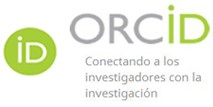Educational inclusion of students with autism spectrum disorders: challenges and opportunities in Intercultural Education
DOI:
https://doi.org/10.62697/rmiie.v4i1.121Keywords:
Educational inclusion, inclusive school environment, Autism spectrum disorders (ASD)Abstract
The educational inclusion of students with Autism Spectrum Disorders (ASD) is a crucial issue in modern education due to the increasing prevalence of these diagnoses and the importance of providing an inclusive and equitable school environment. This study seeks to explore teachers' perceptions and practices in relation to the inclusion of students with ASD, identifying the challenges and opportunities present in schools. Based on a survey carried out among teachers, it was observed that, although many consider inclusion important, there are still deficiencies in terms of specific training, adequate resources and institutional support. This shows the need to develop effective policies and strategies to improve the inclusion of students with ASD in the educational context.
Downloads
References
Ainscow, M., & Booth, T. (2002). Index for Inclusion: Developing learning and participation in schools. Centre for Studies on Inclusive Education. https://www.eenet.org.uk/resources/docs/Index%20English.pdf
Echeita, G., & Simón, C. (2017). Inclusión educativa y exclusión: voces de los alumnos y alumnas. Revista de Investigación en Educación, 15(2), 159-173. https://www.redalyc.org/pdf/551/55127024005.pdf
Lindsay, S., Proulx, M., Scott, H., & Thomson, N. (2014). Exploring teachers’ strategies for including children with autism spectrum disorder in mainstream classrooms. International Journal of Inclusive Education, 18(2), 101-122. https://doi.org/10.1080/13603116.2012.758320
McLeskey, J., Waldron, N. L., & Redd, L. (2024). Inclusion and School Reform: Transforming America’s Classrooms. Pearson Education.
Organización de las Naciones Unidas. (2006). Convención sobre los Derechos de las Personas con Discapacidad. https://www.un.org/esa/socdev/enable/documents/tccconvs.pdf
Organización Mundial de la Salud. (2022a). Trastornos del espectro autista. https://www.who.int/es/news-room/fact-sheets/detail/autism-spectrum-disorders
Organización Mundial de la Salud. (2022b). Informe sobre la prevalencia del autismo. https://www.who.int/es/news-room/fact-sheets/detail/autism-spectrum-disorders
Raposo-Rivas, M., Martínez-Figueira, E., & Cortizo Carballo, M. (2021). Percepções dos professores sobre a implementação de TIC com alunos com Transtorno do Espectro Autista. Revista Portuguesa De Pedagogía, 55. https://doi.org/10.14195/1647-8614_55_2
Schopler, E., & Mesibov, G. B. (2005). The TEACCH approach to autism spectrum disorders. Springer. https://link.springer.com/book/10.1007/978-0-306-48647-0
Smith, J., & Jones, A. (2020). Barreras en la inclusión educativa de estudiantes con TEA. Journal of Special Education, 15(3), 233-245. https://dialnet.unirioja.es/servlet/articulo?codigo=8144461
Smith, P., & Jones, D. (2020). Eficacia de las prácticas inclusivas en estudiantes con TEA. Educational Research Review, 15(3), 88-101. https://ciencialatina.org/index.php/cienciala/article/download/15106/21524/
Vidal-Esteve, M. I. (2024). Inclusión educativa y trastorno del espectro del autismo: facilitadores y contextos. Contextos Educativos. Revista De Educación, (34), 35–57. https://doi.org/10.18172/con.6019
Vygotsky, L. (1978). Mind in society: The development of higher psychological processes. Harvard University Press.
Downloads
Published
How to Cite
Issue
Section
License
Copyright (c) 2025 Paola Isamar Morocho-Torres, María Isabel Álvarez-Lozano, Odalys Peñate-López

This work is licensed under a Creative Commons Attribution-NonCommercial-ShareAlike 4.0 International License.
Authors who publish in Revista Mexicana de Investigación e Intervención Educativa (RMIIE), of Universidad Pablo Latapí Sarre agree to the following terms:
1. Copyright
Authors retain unrestricted copyright to their work. Authors grant the journal the right of first publication. To this end, they assign the journal non-exclusive exploitation rights (reproduction, distribution, public communication, and transformation). Authors may enter into additional agreements for the non-exclusive distribution of the version of the work published in the journal, provided that acknowledgment of its initial publication in this journal is given.
© The authors.
2. License
The articles are published in the journal under the Creative Commons Attribution-NonCommercial-ShareAlike 4.0 International License (CC BY-NC-SA 4.0). The terms can be found at: https://creativecommons.org/licenses/by-nc-sa/4.0/deed.en
This license allows:
- Sharing: Copying and redistributing the material in any medium or format.
- Adapting: Remixing, transforming, and building upon the material.
Under the following terms:
- Attribution: You must give appropriate credit, provide a link to the license, and indicate if any changes were made. You may do this in any reasonable manner, but not in any way that suggests the licensor endorses or sponsors your use.
- NonCommercial: You may not use the material for commercial purposes.
- ShareAlike: If you remix, transform, or build upon the material, you must distribute your creation under the same license as the original work.
There are no additional restrictions. You may not apply legal terms or technological measures that legally restrict others from doing anything the license permits.












